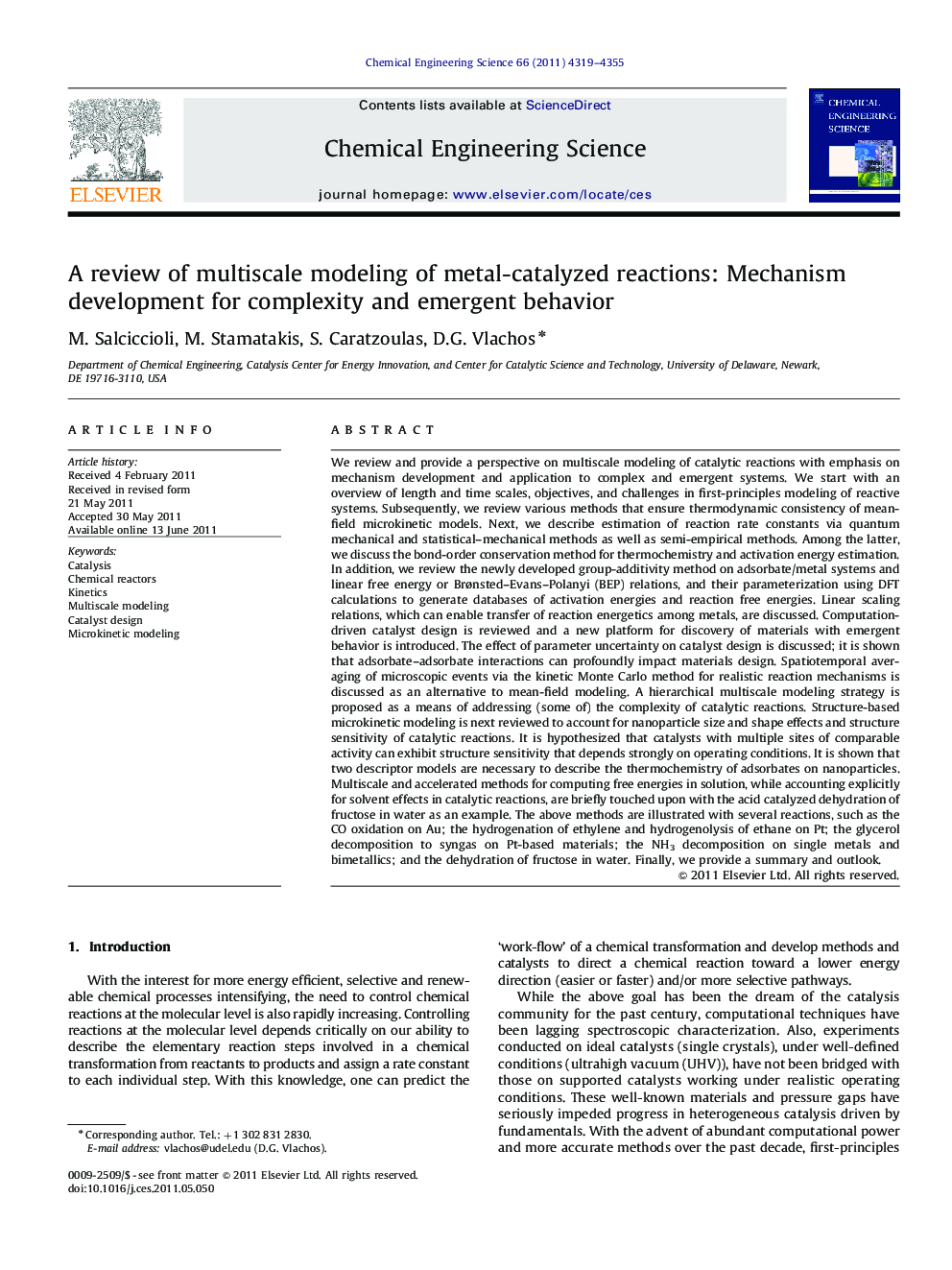| کد مقاله | کد نشریه | سال انتشار | مقاله انگلیسی | نسخه تمام متن |
|---|---|---|---|---|
| 156014 | 456919 | 2011 | 37 صفحه PDF | دانلود رایگان |

We review and provide a perspective on multiscale modeling of catalytic reactions with emphasis on mechanism development and application to complex and emergent systems. We start with an overview of length and time scales, objectives, and challenges in first-principles modeling of reactive systems. Subsequently, we review various methods that ensure thermodynamic consistency of mean-field microkinetic models. Next, we describe estimation of reaction rate constants via quantum mechanical and statistical–mechanical methods as well as semi-empirical methods. Among the latter, we discuss the bond-order conservation method for thermochemistry and activation energy estimation. In addition, we review the newly developed group-additivity method on adsorbate/metal systems and linear free energy or Brønsted–Evans–Polanyi (BEP) relations, and their parameterization using DFT calculations to generate databases of activation energies and reaction free energies. Linear scaling relations, which can enable transfer of reaction energetics among metals, are discussed. Computation-driven catalyst design is reviewed and a new platform for discovery of materials with emergent behavior is introduced. The effect of parameter uncertainty on catalyst design is discussed; it is shown that adsorbate–adsorbate interactions can profoundly impact materials design. Spatiotemporal averaging of microscopic events via the kinetic Monte Carlo method for realistic reaction mechanisms is discussed as an alternative to mean-field modeling. A hierarchical multiscale modeling strategy is proposed as a means of addressing (some of) the complexity of catalytic reactions. Structure-based microkinetic modeling is next reviewed to account for nanoparticle size and shape effects and structure sensitivity of catalytic reactions. It is hypothesized that catalysts with multiple sites of comparable activity can exhibit structure sensitivity that depends strongly on operating conditions. It is shown that two descriptor models are necessary to describe the thermochemistry of adsorbates on nanoparticles. Multiscale and accelerated methods for computing free energies in solution, while accounting explicitly for solvent effects in catalytic reactions, are briefly touched upon with the acid catalyzed dehydration of fructose in water as an example. The above methods are illustrated with several reactions, such as the CO oxidation on Au; the hydrogenation of ethylene and hydrogenolysis of ethane on Pt; the glycerol decomposition to syngas on Pt-based materials; the NH3 decomposition on single metals and bimetallics; and the dehydration of fructose in water. Finally, we provide a summary and outlook.
► A perspective on multiscale modeling of mechanism development.
► Estimation of thermochemistry and kinetics via hierarchical multiscale methods.
► Computation-driven catalyst design and discovery of materials with emergent behavior.
► Uncertainty on catalyst design, particle effects, and structure sensitivity of reactions.
► Free energies in solution and solvent effects in catalytic reactions.
Journal: Chemical Engineering Science - Volume 66, Issue 19, 1 October 2011, Pages 4319–4355